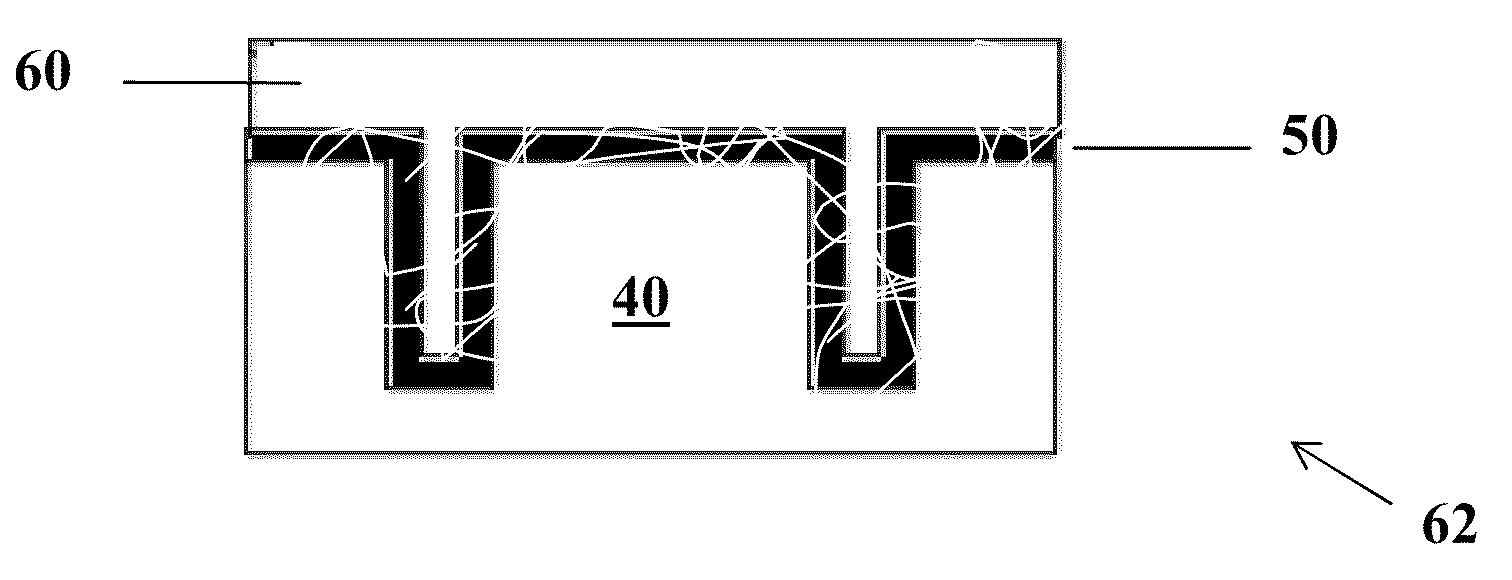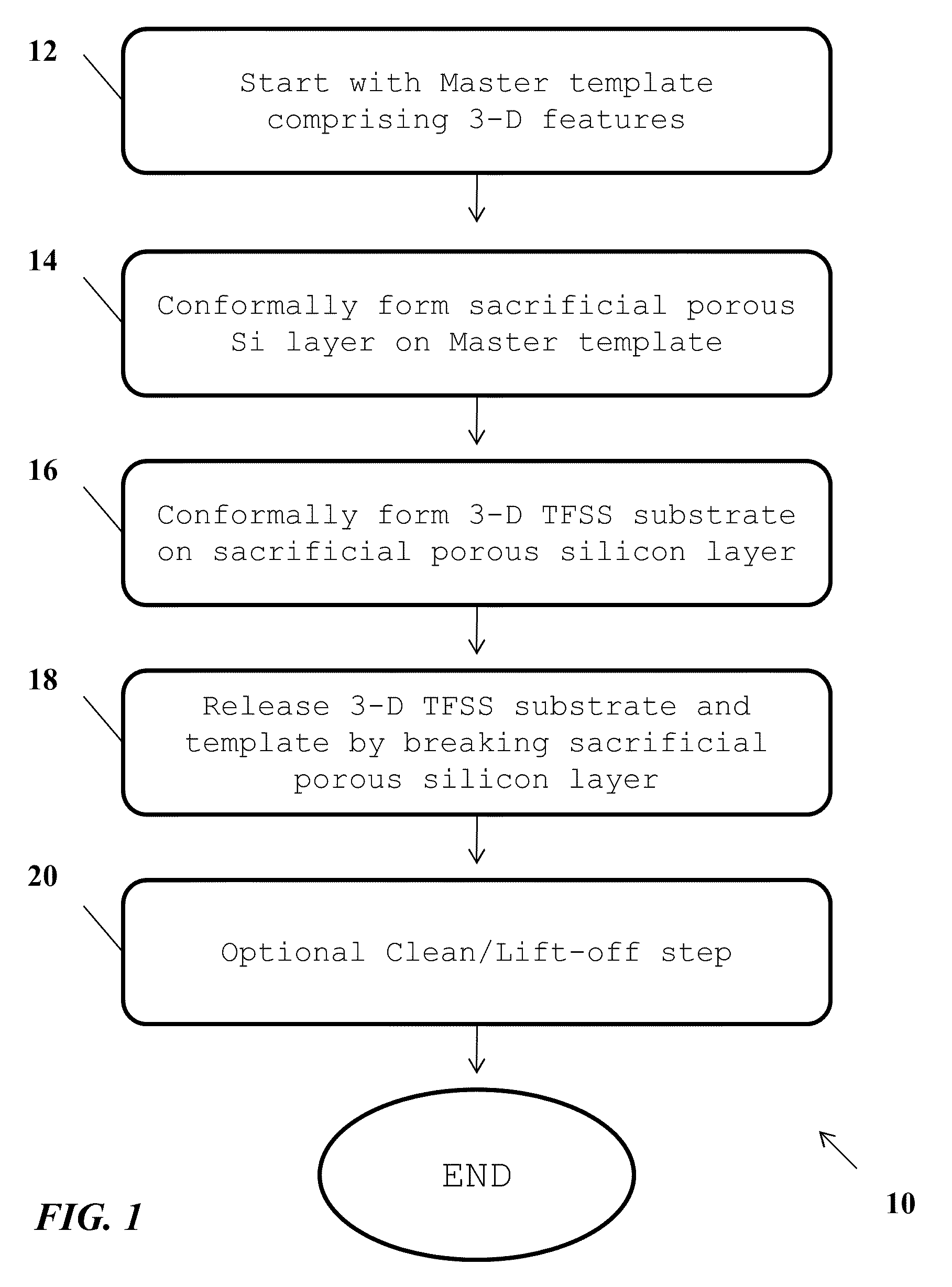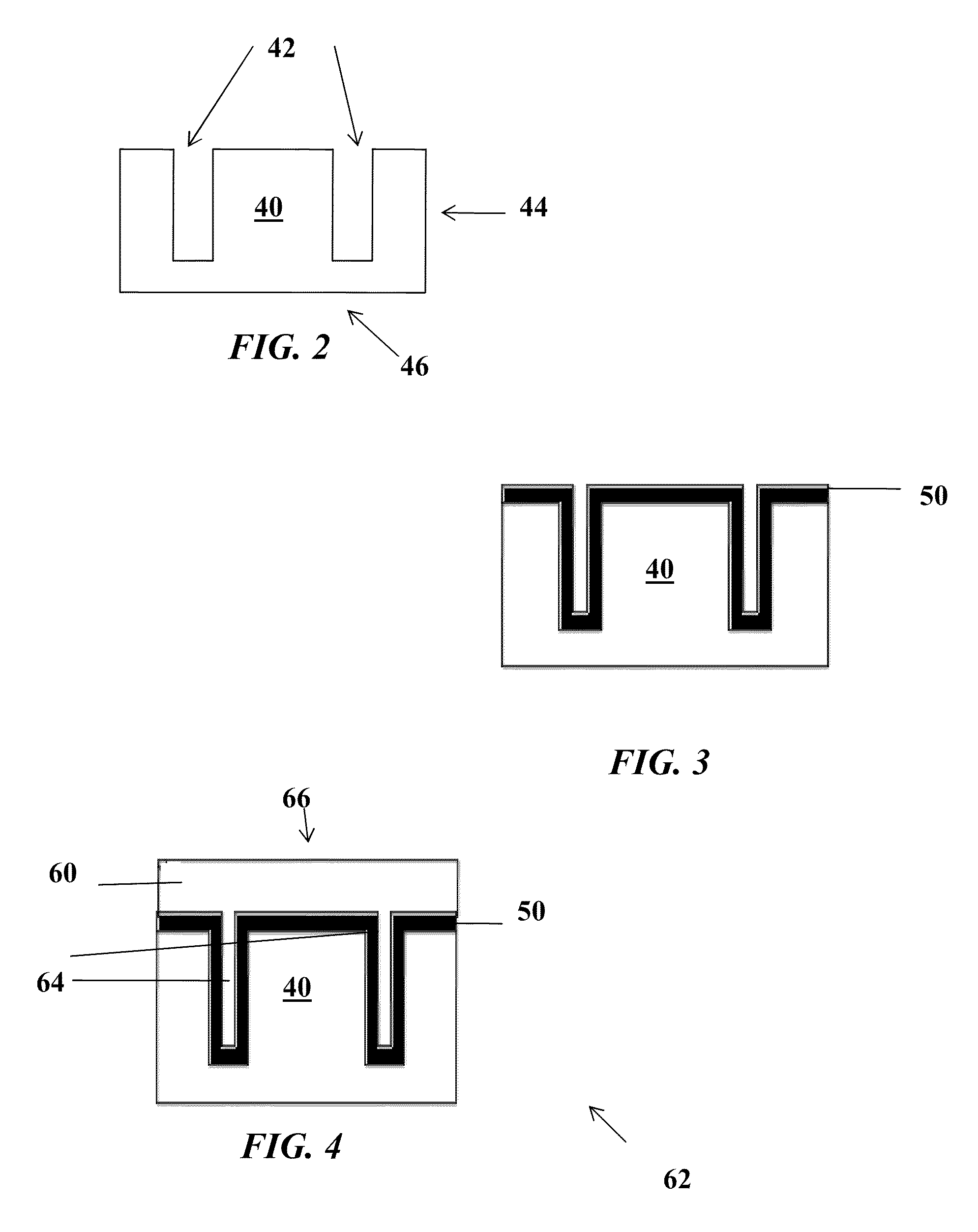Substrate release methods and apparatuses
a technology of substrate and template, applied in the direction of electrical apparatus, basic electric elements, semiconductor devices, etc., can solve the problems of prior art methods that are not suited to fracture porous silicon, many prior art release methods are either less effective or not suitable for fracture porous silicon, so as to reduce the damage to both the substrate and the template, and minimize complexity
- Summary
- Abstract
- Description
- Claims
- Application Information
AI Technical Summary
Benefits of technology
Problems solved by technology
Method used
Image
Examples
Embodiment Construction
[0051]The following description is not to be taken in a limiting sense, but is made for the purpose of describing the general principles of the present disclosure. The scope of the present disclosure should be determined with reference to the claims. And although described with reference to the manufacture and separation of three-dimensional thin-film semiconductor substrate (3-D TFSS), a person skilled in the art could apply the principles discussed herein to the manufacturing of any multi-dimensional substrate.
[0052]Preferred embodiments of the present disclosure are illustrated in the drawings, like numbers being used to refer to like and corresponding parts of the various drawings. The innovative 3-D TFSS substrate designs and technologies of the current disclosure are based on the use of a three-dimensional, self-supporting, semiconductor thin film, deposited on and released from a reusable crystalline (embodiments include, but are not limited to, monocrystalline or multicrysta...
PUM
 Login to View More
Login to View More Abstract
Description
Claims
Application Information
 Login to View More
Login to View More - R&D
- Intellectual Property
- Life Sciences
- Materials
- Tech Scout
- Unparalleled Data Quality
- Higher Quality Content
- 60% Fewer Hallucinations
Browse by: Latest US Patents, China's latest patents, Technical Efficacy Thesaurus, Application Domain, Technology Topic, Popular Technical Reports.
© 2025 PatSnap. All rights reserved.Legal|Privacy policy|Modern Slavery Act Transparency Statement|Sitemap|About US| Contact US: help@patsnap.com



